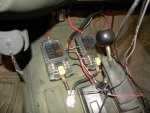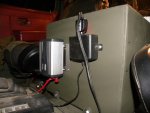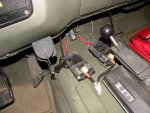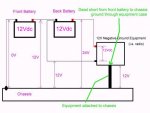- 14,716
- 5,161
- 113
- Location
- Buchanan, GA
I've got a large 12v to 120v inverter I was thinking about installing into my CUCV. Since the #1 battery gets hammered on so much and the second battery/alt isn't used all that much, can't I just tap off it? The inverter has isolated leads in for positive and negative. I've gotta get my listeroid genset up and running, but in the mean time I could use this to power up the lights around the house the next power outage we have.






